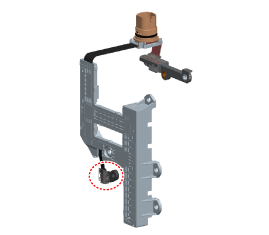Hyundai Elantra: Automatic Transaxle Control System / Transaxle Oil Temperature Sensor Description and Operation
Hyundai Elantra AD (2016-2020) Service Manual / Automatic Transaxle System / Automatic Transaxle Control System / Transaxle Oil Temperature Sensor Description and Operation
| Description |
| • |
Transaxle oil temperature sensor monitors the automatic transaxle fluid's temperature and conveys the readings to TCM. |
| • |
It is an NTC (Negative Thermal Coefficient) sensor whose
resistance has an inversely proportional relationship with the
temperature level. |
| • |
Data produced by this sensor is used to identify damper
clutch activation and deactivation zones within the low temperature and
high temperature range and to compensate hydraulic pressure levels
during gear changes.
|
 Transaxle Control Module (TCM) Repair procedures
Transaxle Control Module (TCM) Repair procedures
Inspection
Transaxle Control Module(TCM) Problem Inspection Procedure
1.
TEST TCM GROUND CIRCUIT: Measure resistance between TCM and
chassis ground using the backside of TCM harness connector a ...
 Transaxle Oil Temperature Sensor Specifications
Transaxle Oil Temperature Sensor Specifications
Specifications
? Type: Negative Thermal Coefficient Type
Temp.[(°C)°F]Resistance (?)MinMax(-40) -40481534530151006(-20) -4.0156141478516443(0) 32.0588756056168(20) 68.02510.62401.92619.3(40) 1 ...
Other information:
Hyundai Elantra AD (2016-2020) Owners Manual: User settings mode
In this mode, you can change the settings of the instrument cluster, doors, lamps,
etc.
1. Driver Assistance
2. Door
3. Lights
4. Sound
5. Convenience
6. Service interval
7. Other
8. Language
9. Reset
The information provided may differ depending on which functions are applicable
to ...
Hyundai Elantra AD (2016-2020) Service Manual: Condenser Repair procedures
Inspection
1.
Check the condenser fins for clogging and damage. If clogged,
clean them with water, and blow them with compressed air. If bent,
gently bend them using a screwdriver or pliers.
2.
Check the condenser connections for leakage, and repair or replace it, if required.
Replace ...
© 2018-2025 www.helantraad.com

